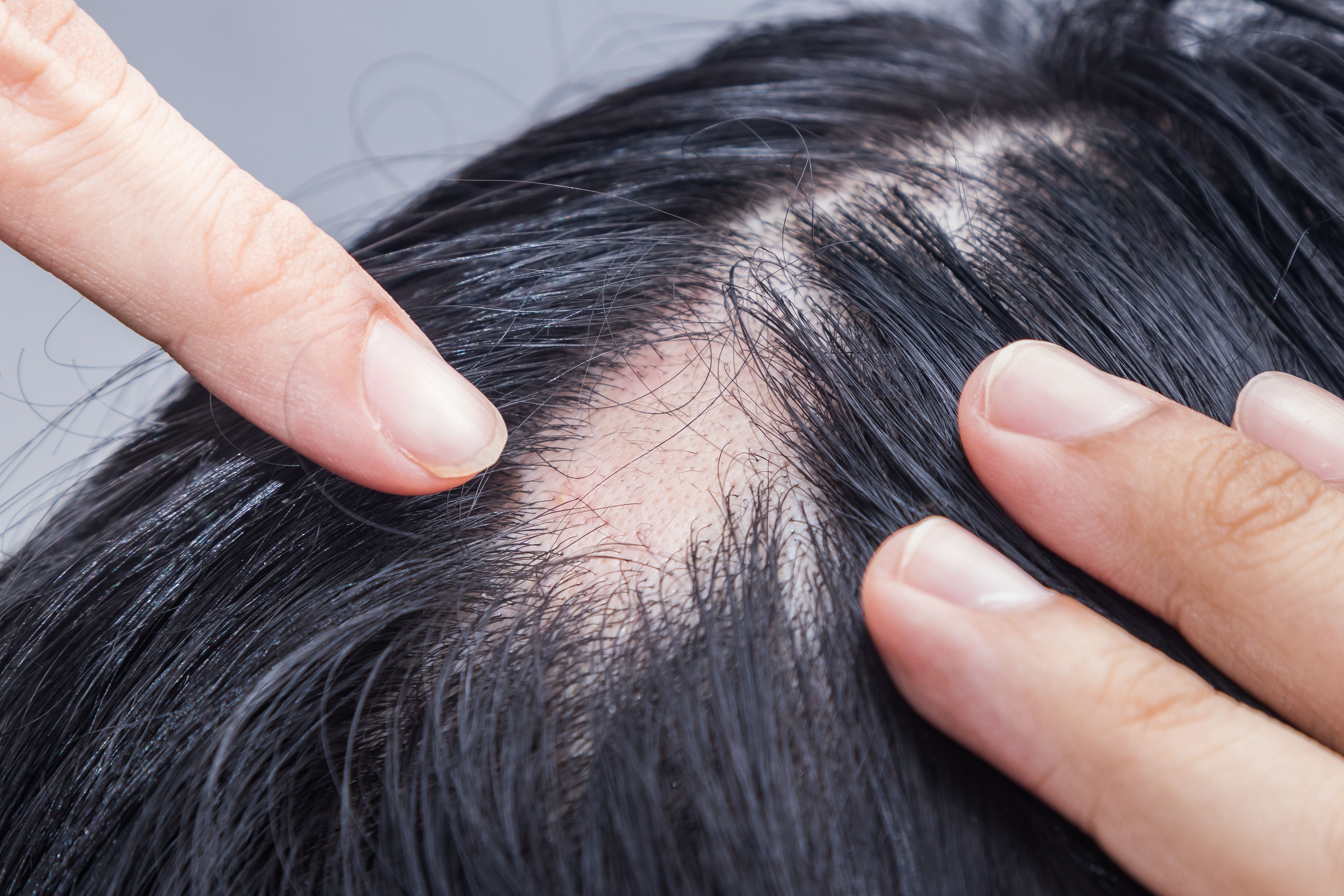- Case-Based Roundtable
- General Dermatology
- Eczema
- Chronic Hand Eczema
- Alopecia
- Aesthetics
- Vitiligo
- COVID-19
- Actinic Keratosis
- Precision Medicine and Biologics
- Rare Disease
- Wound Care
- Rosacea
- Psoriasis
- Psoriatic Arthritis
- Atopic Dermatitis
- Melasma
- NP and PA
- Skin Cancer
- Hidradenitis Suppurativa
- Drug Watch
- Pigmentary Disorders
- Acne
- Pediatric Dermatology
- Practice Management
- Prurigo Nodularis
- Buy-and-Bill
Publication
Article
Dermatology Times
New Technology Could Allow Us to Rethink Alopecia Scores
Author(s):
Study investigators said this system could have significant clinical implications.
A research study published in JAMA Dermatology demonstrates that new technology can track hair loss progression by using an algorithm that quantitates the percentage of hair loss in patients with alopecia. “A generalizable automated assessment of hair loss would provide a way to standardize measurements of hair loss across a range of conditions,” the study authors wrote.
cattyphoto/AdobeStock

“Hair loss impacts so many people. If you have had alopecia or know anyone who is affected by hair loss, you know how profound that impact is,” said Elena Bernardis, PhD, a principal investigator on the study and a research assistant professor of dermatology at Perelman School of Medicine and affiliate faculty in the General Robotics, Automation, Sensing, and Perception Lab at the University of Pennsylvania in Philadelphia. “However, despite the staggering numbers, technology to help track, diagnose, and treat [patients with alopecia] remains very limited. There are also still many unknowns, leading to numerous active areas of research. For all these scenarios, the first step is to quantify the hair loss.”
The goal of the multicenter research study was to develop and validate a new algorithmic quantification system, HairComb, to automatically compute the percentage of hair loss from images, regardless of alopecia subtype. Images of 404 participants 2 years and older taken from 2015 to 2021 were collected from the Children’s Hospital of Philadelphia and via a Penn Dermatology web interface.
Scoring systems correlation analysis was performed for 250 participants, of whom 70.4% were female; their mean age was 35.3 years. Among this subgroup of participants, 75 were classified as having androgenetic alopecia; 66 had alopecia areata; 50 central centrifugal cicatricial alopecia; 27 other alopecia diagnoses, including frontal fibrosing alopecia, lichen planopilaris, and telogen effluvium; and 32 had unaffected scalps without alopecia.
Scoring systems correlation analysis “showed strong correlations with underlying percentage hair loss, with coefficient of determination R2 values of 0.793 and 0.804 with respect to percentage hair loss,” the study authors wrote. HairComb achieved “92% accuracy, 5% regression error, 7% hair loss difference and predicted scores with errors comparable to annotators....”
“The measure of hair density change being the underlying common feature to all hair loss types should come as no surprise to clinicians,” Bernardis said. “What will hopefully be interesting to clinicians is that our new analysis shows how percentage hair loss and scoring systems for different alopecia subtypes are related [and] also that moving forward, an algorithm to measure hair loss can actually be used for any alopecia type.”
Bernardis said that to the best of her knowledge, HairComb is the first automated hair system using a standardized method that allows anyone with a camera to take a picture of the scalp and return the hair density in real time at every point for all alopecia subtypes.
“Because HairComb requires only a cell phone camera, there is no need for specialized or expensive equipment,” she said. “So not only have we created a clinical tool that can be used for research or to assess patients during a clinical visit, but the tool can be used for teledermatology and for patients at home—for example, to take images in between visits to help follow a patient’s progression.”
According to Bernardis, the main challenge of translating the research study into clinical practice is likely how to integrate the use of a new imaging tool in the established clinical workflow. To facilitate adoption, HairComb is embedded in a new web interface, Trichy, that the study authors piloted at Penn Dermatology clinics.
“There are still limits, though, in quantifying alopecia from 2-dimensional...images alone,” Bernardis said. “Even when clinicians try to match the guidelines, it is practically impossible to take the exact same view over time for tracking purposes or to compare between patients. Right now, this is still left up to the clinician.”
In response, the authors have been shifting to a 3-dimensional (3D) approach. “We created a system that allows anyone to take a video using a handheld camera like a cell phone. The video then outputs a 3D model of the person’s entire head: face and scalp,” Bernardis said. The future goal is to combine the algorithm with the 3D head reconstruction to visualize and quantify hair loss information over the entire scalp at once.
“I believe the study’s algorithm can be extremely useful for [patients with hair loss], especially in demonstrating the degree of loss to help manage expectations and the goals of therapy,” said Patrick Zito, DO, PharmD, FAAD, a voluntary assistant professor of dermatology at the University of Miami Leonard M. Miller School of Medicine in Florida. “Frequently, patients have more than one type of alopecia, which can be challenging.”
Zito, who was not an author on the study, said he suspects that adoption of HairComb will depend on the practice setup and its ability to take high-quality images. “If a quality photo is not taken, then the algorithm will not calculate the loss accurately,” he said.
On the other hand, Zito believes that for clinicians who have patients with alopecia on various therapies, “the algorithm will be helpful in demonstrating visible changes for the patient to see.”
The up-front cost of the system will also play a role in adoption. “The price point of HairComb will be important,” Zito said. “It is also likely the algorithm will be employed by clinicians in combination with existing measurement tools.”
Reference
1. Gudobba C, Mane T, Bayramova A, et al. Automating hair loss labels for universally scoring alopecia from images: rethinking alopecia scores. JAMA Dermatol. Published online December 14, 2022. doi:10.1001/jamadermatol.2022.5415






